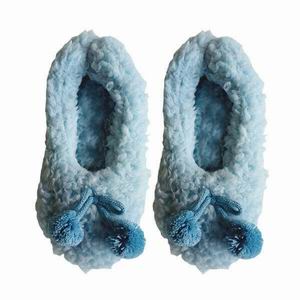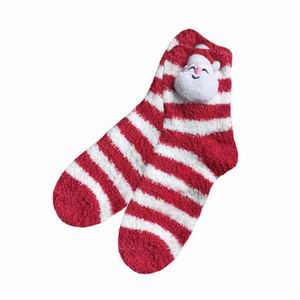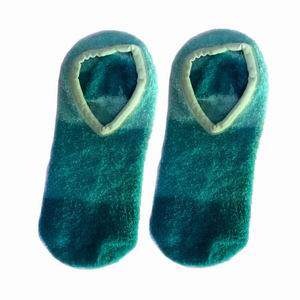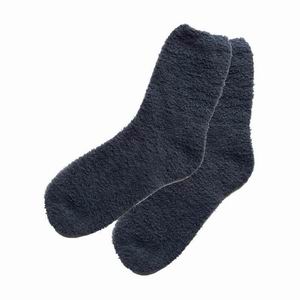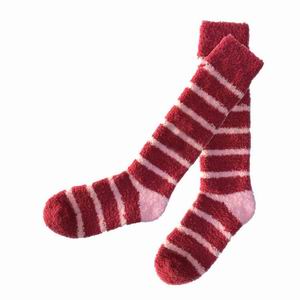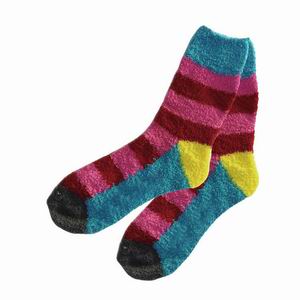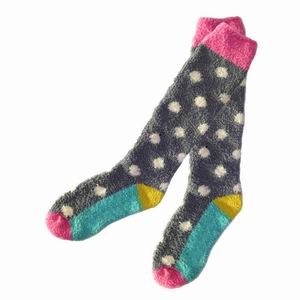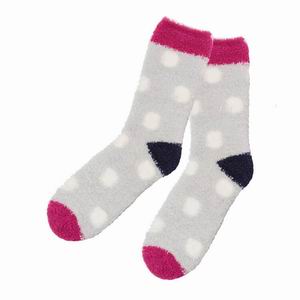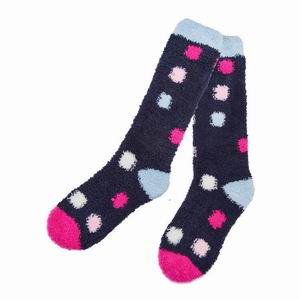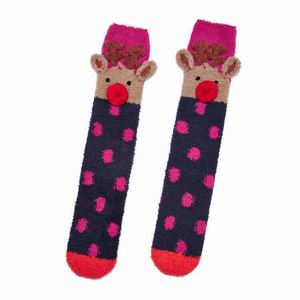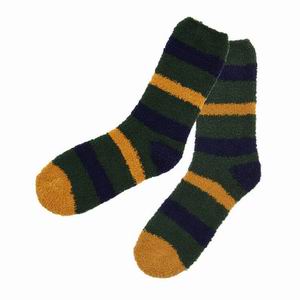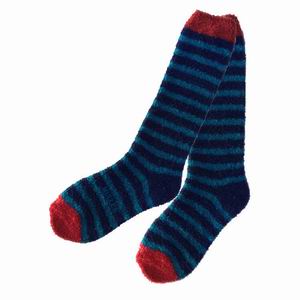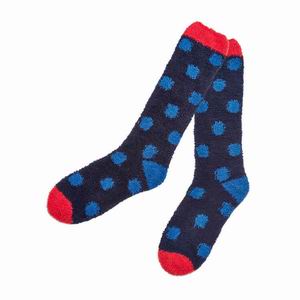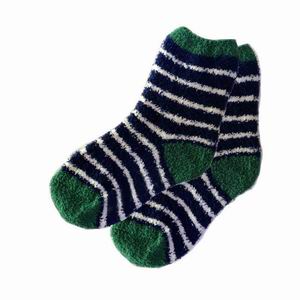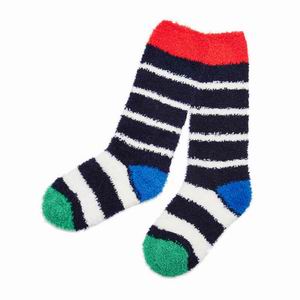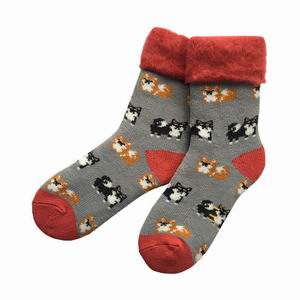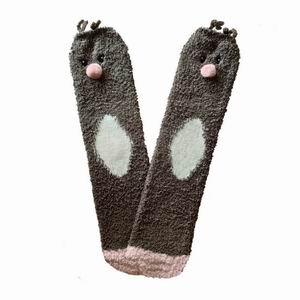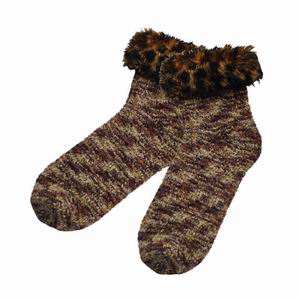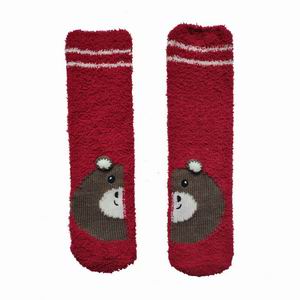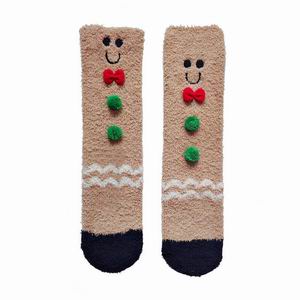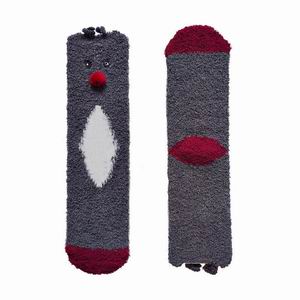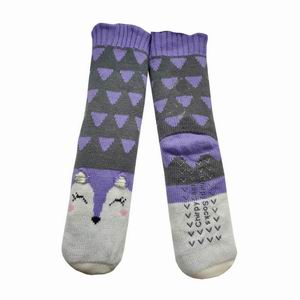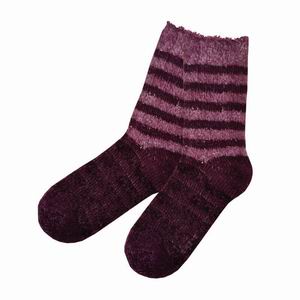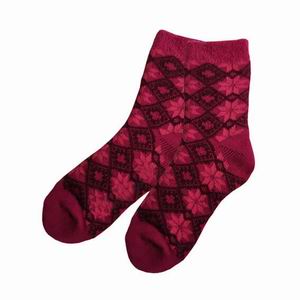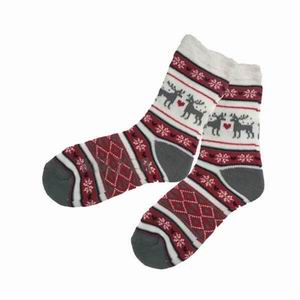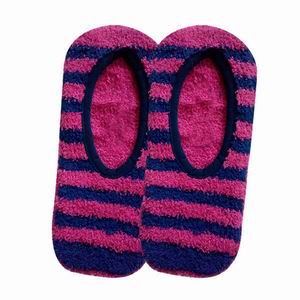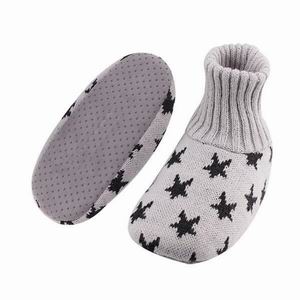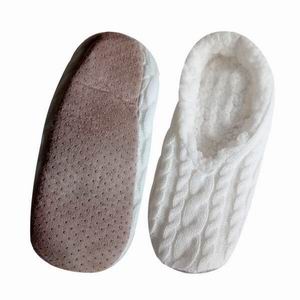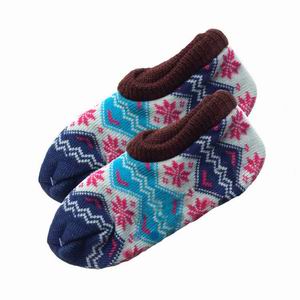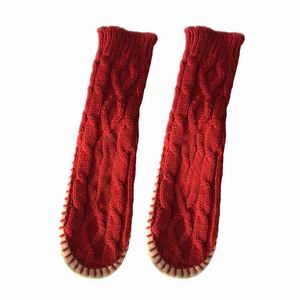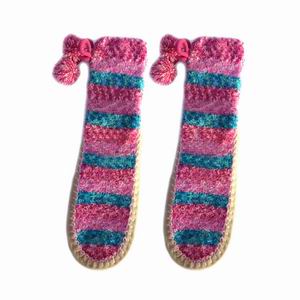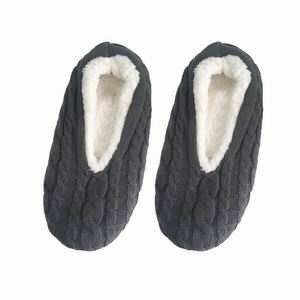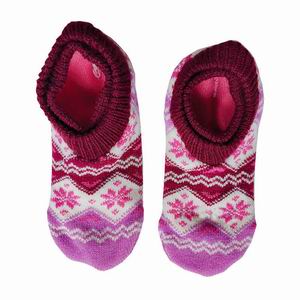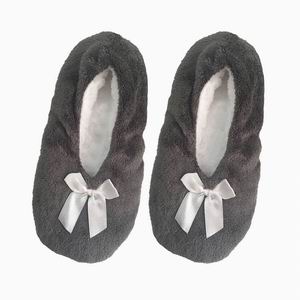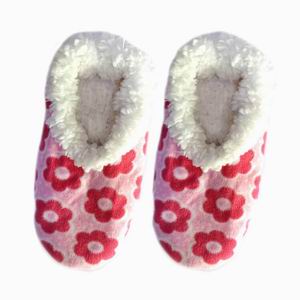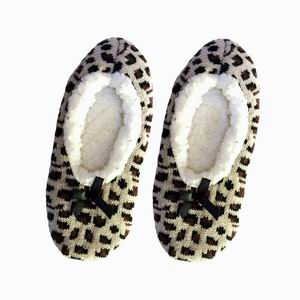Slipper Socks Manufacturer
We are a vertically integrated slipper socks manufacturer and supplier. In order to produce premium slipper socks, we continue to research, constantly improve raw material selection standards and optimize manufacturing processes. We provide a full line products, including single-layer socks and double-layer socks with gauges from 3.5 to 5.0 and needles 56n, 72n, 84n, 96n, 108n, 120n. Single-layer socks mainly include half-velvet socks, feather socks, chenille socks, etc. Double-layer socks mainly include knitted sherpa socks, sherpa booties, knitted fluffy socks, fluffy booties, etc.
1.Products
1.1 Yarn
1.1.1 Yarn Count
It mainly uses 5.8s and 13s yarn count.
1.1.2 Material
It mainly includes polyester, acrylic, bamboo fiber, merino wool, etc.
-
Polyester. It has the characteristics of being strong and durable, good elasticity, not easily deformed, corrosion-resistant, insulation, easy washing and quick drying.
-
Acrylic fiber. It has the advantages of softness, bulkiness, not easy to dye, bright color, light resistance, antibacterial, and not afraid of insects.
-
Bamboo fiber. It is eco-friendly fiber that dries quickly and is breathable while also providing antibacterial properties and repels odors.
-
Merino wool. Super soft, itch-free, breathable, highly durable and odor-repellent, with great warmth retention properties.
-
Spandex. It has excellent elasticity, is 2-3 times stronger than rubber latex thread, and has a finer linear density. It has good acid and alkali resistance, sweat resistance and wear resistance.
1.1.3 Type
It mainly includes ordinary yarn and fancy yarn. The fancy yarns include fluffy yarn, chenille yarn, feather yarn, centipede yarn, etc.
1.2 Dispensing Glue
1.2.1 Material
It generally uses two kinds of raw materials such as silicone and PVC.
- Silicone. It has the characteristics of strong adhesion, washing resistance, comfortable handle, good environmental protection and so on.
- PVC. It has the characteristics of strong adhesion, water resistance, and high cost performance.
1.2.2 Style
It is basically presented with regular geometric figures, such as circle, rectangle, hexagonal, etc. which are evenly distributed on the soles of socks.
1.3 Fabric
Mainly, the double socks involve the use of fabric.
1.3.1 Socks Surface
It mainly uses fabric such as polar fleece and coral fleece.
1.3.2 Socks Inside
It mainly uses sherpa fabric and plush fabric. After investigation, it was found that the length of half-inch velvet provides the highest comfort to the feet.
1.4 Accessories
It mainly includes pom poms, bows, animal heads, etc. Their use will make slipper socks look more lovely.
1.5 Details
The workmanship of socks is mainly reflected in the cuff, head, soles and other parts of socks. According to the market investigation, the common problems of similar products are easy to break holes, easy to slip off, poor elasticity, thick seams, seams open easily, easy to drop glue, and so on.
Through continuous research, the solutions to the above problems are as follows.
1.5.1 Easy to Break Holes
Sock toes, soles, heels and other areas prone to holes are reinforced with high-quality nylon yarn to enhance firmness.
1.5.2 Easy to Slip Off
The sock cuffs are made of elastic bands with high-quality lifting strength and elasticity, which will prevent them from slipping or pinching your ankles. If it is single-layer socks, you can apply a layer of non-slip silicone inside the sock opening as needed.
1.5.3 Poor Elasticity
For double-layer socks with fabric uppers, choosing the right size is most important. For double-layer socks with yarn on the surface or single-layer socks, using good quality spandex can enhance the tensile strength and resilience.
1.5.4 Thick Toe Seams
The use of advanced computer sewing machine, coupled with more than 10 years of experience of sewing workers, can make the sock head seams flat, basically no tickling ribs.
1.5.5 Seams Open Easily
The use of high-quality nylon yarn as the suture line at the sock toe and ankle seams can increase the firmness of the seams, and at the same time, no tiny openings are missed when the sock toe is sewn.
1.5.6 Easy to Fall Off
In order to prevent the glue from falling off, we have specially studied the optimal temperature for silicone and PVC to adhere to the yarn, such as acrylic 100-130°C, polyester 120-130°C, cotton 130-150°C. The blended yarns are dominated by lower temperatures in their components.
2.Manufacturing
The process is sampling, knitting, linking, boarding, inspection, packaging, etc.
2.1 Sampling
Before bulk production, we create a technical sheet that contains are the information to produce the desired socks. Sample pairs are produced and sent to client for quality, size, color, drawings and other elements confirmation. We only start production when the samples are approved. If required we can perform test reports.
2.2 Knitting
After the sample is confirmed, we produce the order as per the established specifications and requirements. At present, we have 6 skilled mechanics, 30 experienced knitters, and 80 computerized sock machines, which are equipped with single needle cylinders of different gauges and needles, and can knit various tissues such as plain stitch, plating, tuck, jacquard, terry and horizontal stripes.
2.2.1 Gauges
It mainly includes 4.0-inch and 4.5-inch gauges.
2.2.2 Needles
There are 72, 84, 96, 108 and 120 needles.
2.2.3 Threads
It can provide 10F of threads, of which 2F are used for knitting and 8F are used for jacquard. It can produce 8-color jacquard products.
2.2.4 Jacquard
In addition to the main yarn supply port, there are one or more auxiliary yarn ports that supply yarn at the same time, and use jacquard equipment to control the formation of patterns.
2.3 Linking
At present, it mainly uses two methods to link the head, such as manual cross-stitching and straight blind stitching. There are 6 Rosso machines for straight seams and 3 Lintoe machines for cross-stitch seams.
2.3.1 Straight Blind Stitching
This method uses a straight sewing machine, uses overlock stitching, and wraps the sock toe coil with stitches to produce a relatively flat sock toe.
2.3.2 Manual Cross-Stitching
This method uses a round socks machine, and the stitched socks toe coils are sequentially put on the needle of the sewing machine to sew. The socks toe produced has no ribs.
2.4 Boarding
All socks pass through are boarding machines to give them a clean look and feeling before being packed. There are 1 rotary electric steam boarding machine, which is generally used for setting short socks, and 2 hanging electric steam boarding machines, which are suitable for all types of socks.
2.5 Dispersion
There are mainly monochromatic point molding machine and two-color point molding machine, using quartz tube heating to achieve dispensing.
2.6 Inspection
Quality inspection takes placed in every step of the production process and the most thorough product quality inspection takes placed right before packaging in order to guarantee that no socks are defective or contaminated. Quality inspections can be arranged with external entities.
2.6.1 Formaldehyde Content
Class A products ≤ 20mg/kg, which refer to products used by infants and young children.Class B products ≤ 75mg/kg, which refer to products that come into direct contact with the skin when worn.
2.6.2 Ph Value
4.0-7.5, it can be understood that Class A and Class B products should be in this range (there are no Class C products in socks).
2.6.3 Bad Smell. None
There should be no smell in finished socks.
2.6.4 Decomposable (carcinogenic) Aromatic Amine Dye
Disable. Some dyes are harmful to the human body and even cause canceration, such as azo dyes, the standard stipulates that the use of these dyes should be prohibited, and the detection limit should be ≤ 20mg/kg.
2.6.5 Color Fastness to Water
It refers to the change of color fastness of socks after exposure to water. According to the test of discoloration and staining, class A products ≥ grade 4, class B products ≥ grade 3.
2.6.6 Color Fastness to Acid and Alkali Perspiration
The change of color fastness of socks in the presence of acidic or alkaline sweat can be divided into discoloration and staining tests, class A products ≥grade 4, class B products ≥ grade 3.
2.6.7 Color Fastness to Dry Friction
The change of color fastness of socks under the condition of non-wetting and friction at room temperature: class A ≥ grade 4, class B ≥ grade 3.
2.6.8 Color Fastness to Saliva
It refers to the change of color fastness of socks when they encounter saliva. Divided into discoloration and staining test, Class A products ≥ grade 4, Class B products are not tested.
2.6 Packaging
After passing quality inspection, it will be packaged according to customized requirements. At present, there are packaging cardboard, cardboard bags, cartons and other types of packaging. It involves packaging materials such as packaging cardboard, cardboard bags, cuff labels, size stickers, sock hangers (paper cards), waist seals, packaging hooks, sock toe/cuff fasteners, outer packaging cartons and other packaging materials.

